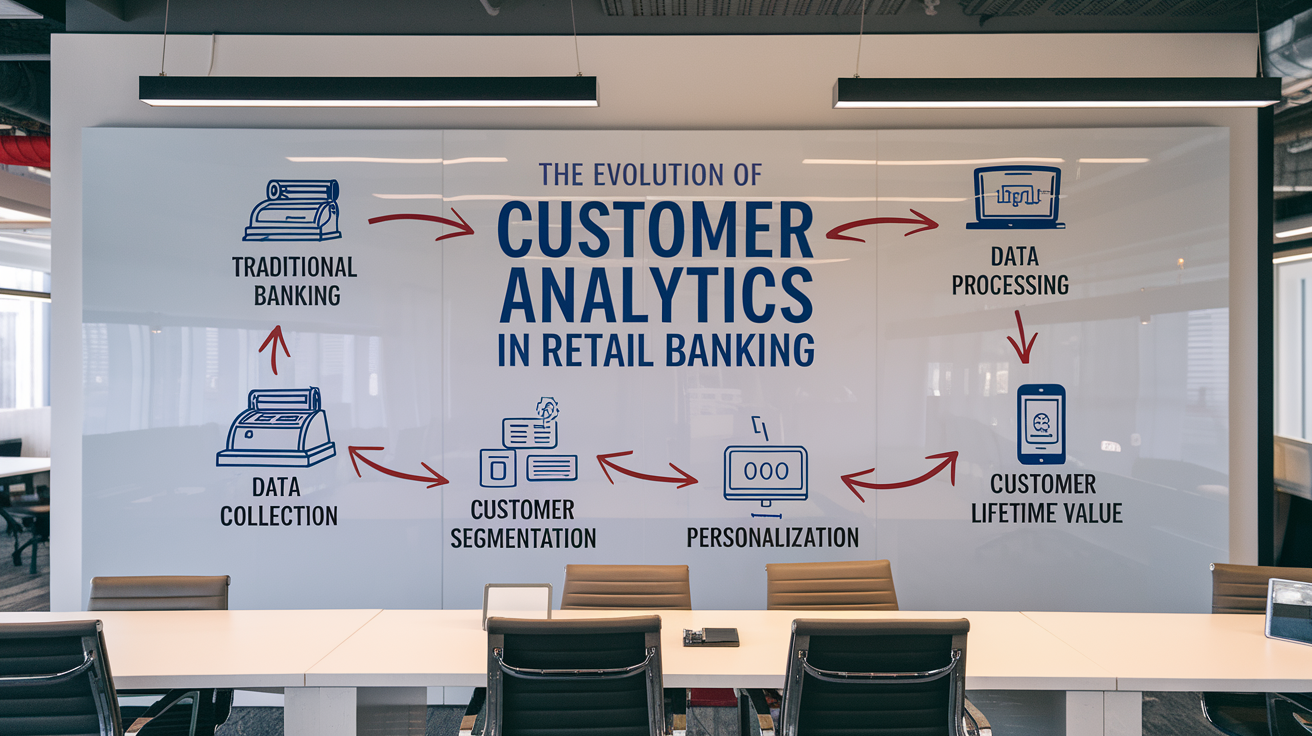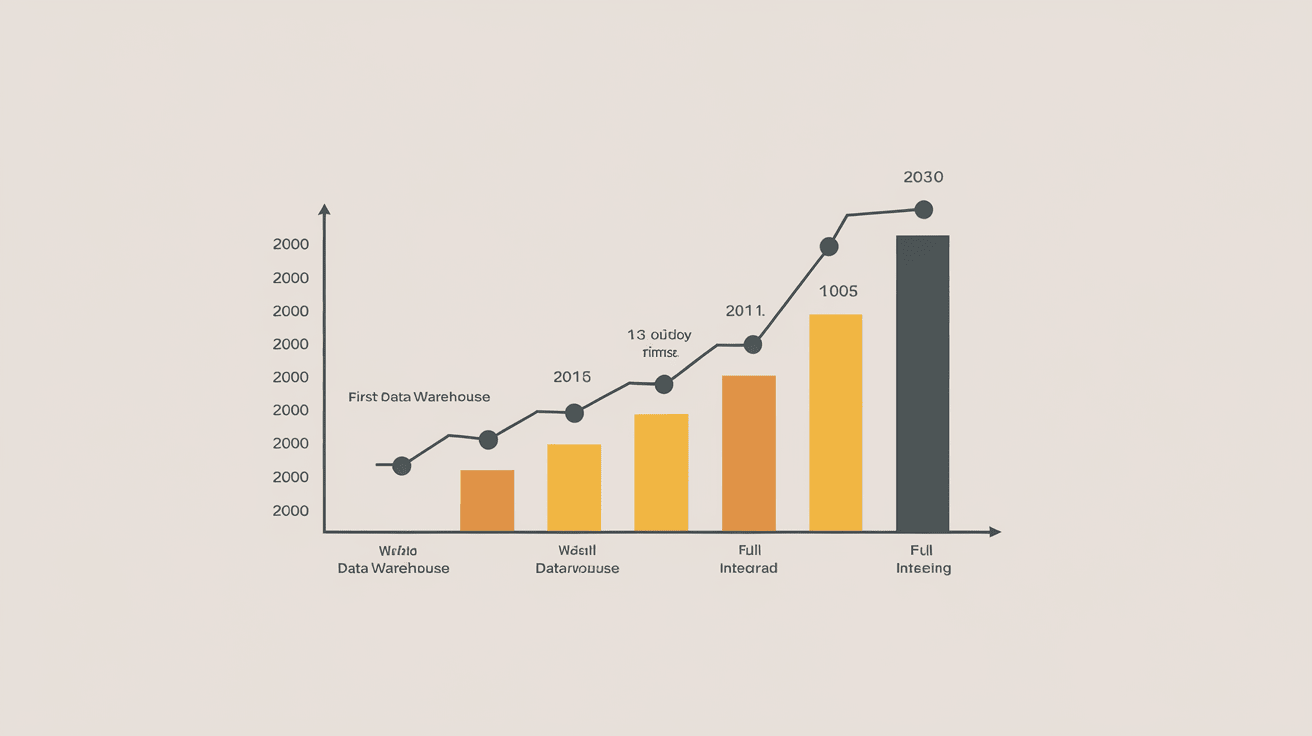The Evolution of Customer Analytics in Retail Banking

Introduction: The Role of Customer Analytics in Retail Banking
Retail banking has undergone a significant transformation in the past decade, driven by digitalization, big data, and artificial intelligence (AI). As customers demand more personalized, convenient, and seamless banking experiences, financial institutions are leveraging customer analytics to gain deeper insights into customer behavior, preferences, and financial needs.
Customer analytics in retail banking involves collecting, processing, and analyzing vast amounts of transactional, behavioral, and demographic data to improve customer experiences, optimize marketing strategies, and enhance risk management. With the rise of fintech disruptors, AI-powered banking, and open banking regulations, traditional banks must evolve their customer analytics strategies to remain competitive.
This article explores the evolution of customer analytics in retail banking, its applications, benefits, challenges, real-world examples, and future trends shaping banking strategies.
What is Customer Analytics in Retail Banking?
Definition
Customer analytics in banking refers to the use of data-driven insights, AI, and machine learning (ML) to understand customer behavior, predict needs, and deliver personalized financial services.
Key Components of Customer Analytics in Banking
- Descriptive Analytics – Analyzing historical data to understand customer behavior.
- Predictive Analytics – Using AI to forecast future customer actions.
- Prescriptive Analytics – Recommending the best actions based on data insights.
- Real-Time Analytics – Delivering instant insights for fraud detection, personalization, and customer engagement.
Example:
- JPMorgan Chase uses AI-powered customer analytics to offer real-time financial recommendations.
The Evolution of Customer Analytics in Retail Banking
1. Traditional Banking & Manual Customer Insights (Pre-2000s)
- Banks relied on branch interactions, phone calls, and financial statements to assess customer needs.
- Limited data collection and manual processes led to reactive decision-making.
2. Rise of Digital Banking & CRM Systems (2000-2010)
- The introduction of online banking and CRM (Customer Relationship Management) platforms improved data collection.
- Banks began analyzing customer transactions, demographics, and spending patterns.
Example:
- Bank of America launched its first digital banking analytics platform to track customer interactions.
3. Big Data & AI-Powered Insights (2010-2020)
- The rise of AI, big data, and machine learning enabled predictive analytics for hyper-personalization.
- Real-time transaction analysis improved fraud detection, credit scoring, and marketing automation.
Example:
- HSBC implemented AI-driven customer analytics for fraud detection and risk assessment.
4. Open Banking & Real-Time Personalization (2020-Present)
- Open banking APIs enable banks to access third-party customer data for holistic financial insights.
- AI chatbots, robo-advisors, and real-time analytics improve customer engagement and financial planning.
Example:
- Revolut uses AI-driven analytics to offer personalized investment recommendations.
Applications of Customer Analytics in Retail Banking
1. Personalized Banking & AI-Driven Financial Recommendations
- AI-powered analytics track customer spending habits and financial goals.
- Personalized loan offers, savings plans, and investment strategies are recommended.
Example:
- Wells Fargo’s AI-driven financial advisor recommends customized savings plans based on spending behavior.
2. Customer Segmentation & Targeted Marketing
- Banks classify customers into segments based on transaction patterns, demographics, and credit history.
- AI-driven marketing automation sends personalized promotions.
Example:
- Citibank’s AI model segments customers into high-value, risk-prone, and dormant categories.
3. Fraud Detection & Risk Assessment
- AI analytics detect unusual transaction behaviors and flag potential fraud.
- Risk models predict loan defaults and credit risks.
Example:
- Santander uses AI-driven fraud detection to identify anomalous transactions in real-time.
4. Customer Churn Prediction & Retention Strategies
- Predictive analytics assess early signs of customer dissatisfaction and offer retention incentives.
- Banks improve customer engagement through personalized financial wellness programs.
Example:
- BBVA’s AI analytics predicts customer churn and offers targeted loyalty rewards.
5. Real-Time Credit Scoring & Loan Approvals
- Alternative credit scoring models analyze social media activity, utility payments, and mobile data.
- AI-powered platforms provide instant loan approvals with risk-adjusted interest rates.
Example:
- Goldman Sachs’ Marcus platform uses AI analytics for real-time credit underwriting.
Benefits of Customer Analytics in Retail Banking
1. Improved Customer Experience & Loyalty
- AI-driven insights enable hyper-personalized banking experiences.
- Customers receive proactive financial advice and real-time fraud alerts.
Example:
- Bank of America’s AI assistant, Erica, provides real-time financial insights to enhance customer satisfaction.
2. Increased Operational Efficiency & Cost Savings
- Automating customer service, fraud detection, and risk management reduces operational costs.
- AI chatbots handle routine queries, reducing the need for human support agents.
Example:
- HSBC reduced operational costs by 20% using AI-powered customer analytics.
3. Enhanced Fraud Prevention & Regulatory Compliance
- Real-time transaction monitoring improves AML (Anti-Money Laundering) compliance.
- AI analytics reduce false positives in fraud detection models.
Example:
- Standard Chartered uses AI-driven compliance analytics to meet global banking regulations.
4. Data-Driven Decision Making for Banking Strategies
- Banks leverage customer analytics to launch new financial products tailored to customer needs.
- AI-driven insights enable dynamic interest rate adjustments based on market conditions.
Example:
- Goldman Sachs analyzes customer analytics to refine investment products.
Challenges of Implementing Customer Analytics in Banking
1. Data Privacy & Regulatory Compliance
- GDPR, CCPA, and PSD2 regulations impose strict data privacy laws.
- Solution: Implement data anonymization and differential privacy techniques.
2. Data Silos & Integration Issues
- Customer data is fragmented across multiple banking platforms.
- Solution: Use cloud-based data lakes and open banking APIs for seamless integration.
3. AI Bias & Model Accuracy Issues
- Machine learning models can amplify biases in credit scoring and risk assessment.
- Solution: Regular AI audits and fairness-aware ML algorithms.
4. Cybersecurity Risks & Data Breaches
- AI-driven customer analytics requires robust cybersecurity frameworks.
- Solution: Implement end-to-end encryption and multi-factor authentication.
Case Studies: How Banks Use Customer Analytics
1. JPMorgan Chase’s AI-Powered Financial Insights
- Implemented: AI-driven spending behavior analysis to offer personalized insights.
- Results: Increased customer engagement by 35% through tailored banking solutions.
2. HSBC’s Real-Time Fraud Detection
- Implemented: AI-based analytics for fraud prevention and AML compliance.
- Results: Reduced false fraud alerts by 30%, improving security.
3. Revolut’s AI-Driven Customer Engagement
- Implemented: Predictive analytics for hyper-personalized financial services.
- Results: Boosted customer retention rates by 40%.
Future Trends in Customer Analytics for Retail Banking
1. AI-Powered Voice & Chatbot Banking
- AI assistants will provide real-time banking support and financial recommendations.
2. Blockchain-Based Customer Data Security
- Decentralized identity management will enhance data privacy in banking analytics.
3. Quantum AI for Real-Time Risk Assessment
- Quantum computing will enhance fraud detection and credit risk modeling.
4. Predictive AI for Personalized Wealth Management
- AI will proactively recommend investment opportunities based on customer profiles.
Conclusion: The Future of Customer Analytics in Banking
Customer analytics is reshaping retail banking, driving personalized experiences, fraud prevention, and AI-powered financial services. Banks that invest in data-driven decision-making, AI-powered risk management, and real-time analytics will stay ahead in the competitive FinTech ecosystem.
CustomerAnalytics #AIinBanking #RetailBanking #FinTech #BigData #RiskManagement #CyberSecurity #DigitalBanking #FraudDetection #AIChatbots #PredictiveAnalytics #MachineLearning #Blockchain #OpenBanking #DataPrivacy #BankingTransformation #FinancialTechnology #RegTech

Introduction Data warehousing has played a pivotal role in the evolution of banking technology. As banks handle enormous volumes of…

Introduction The rapid growth of digital banking, financial technology (FinTech), and data-driven decision-making has created a pressing need for scalable…